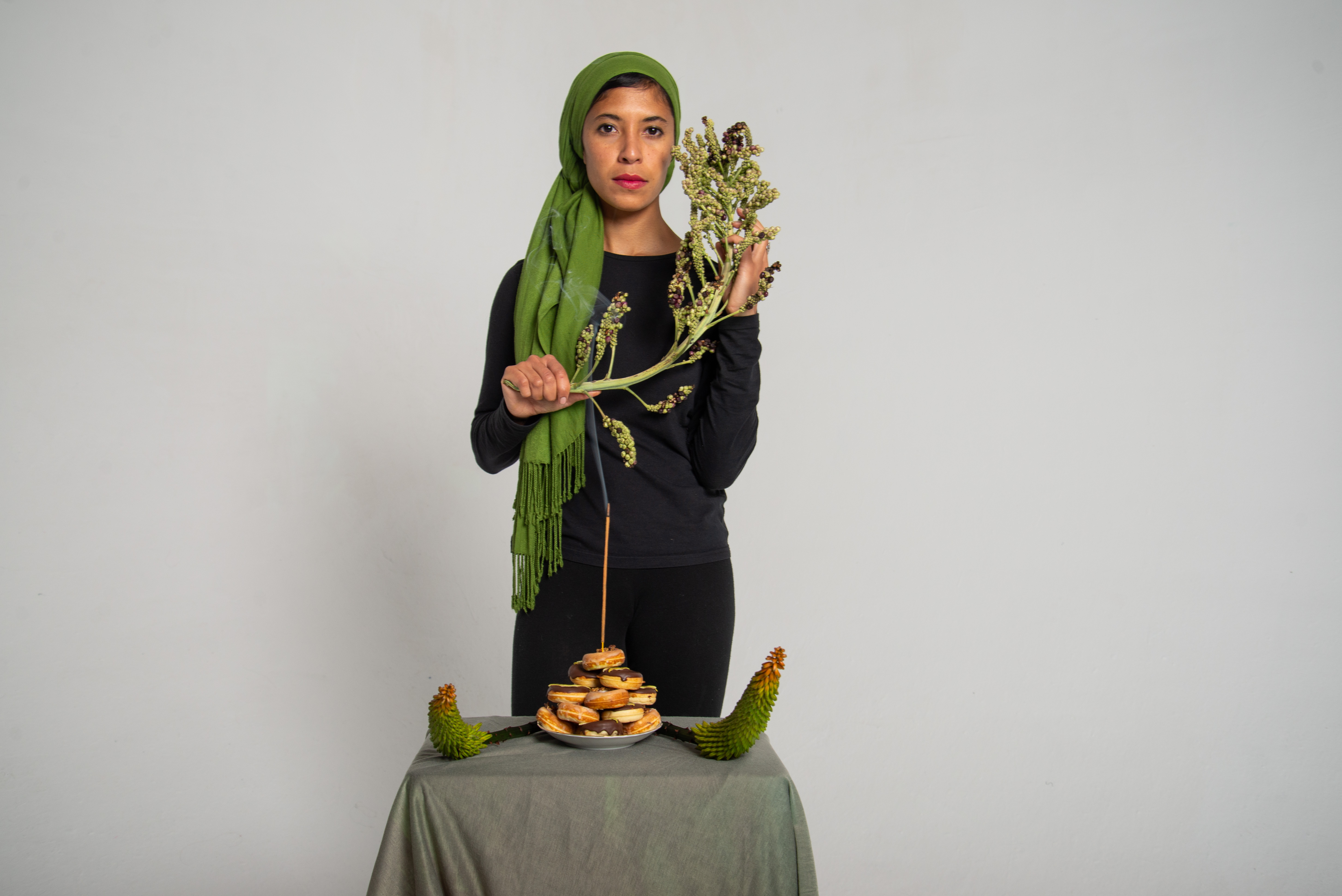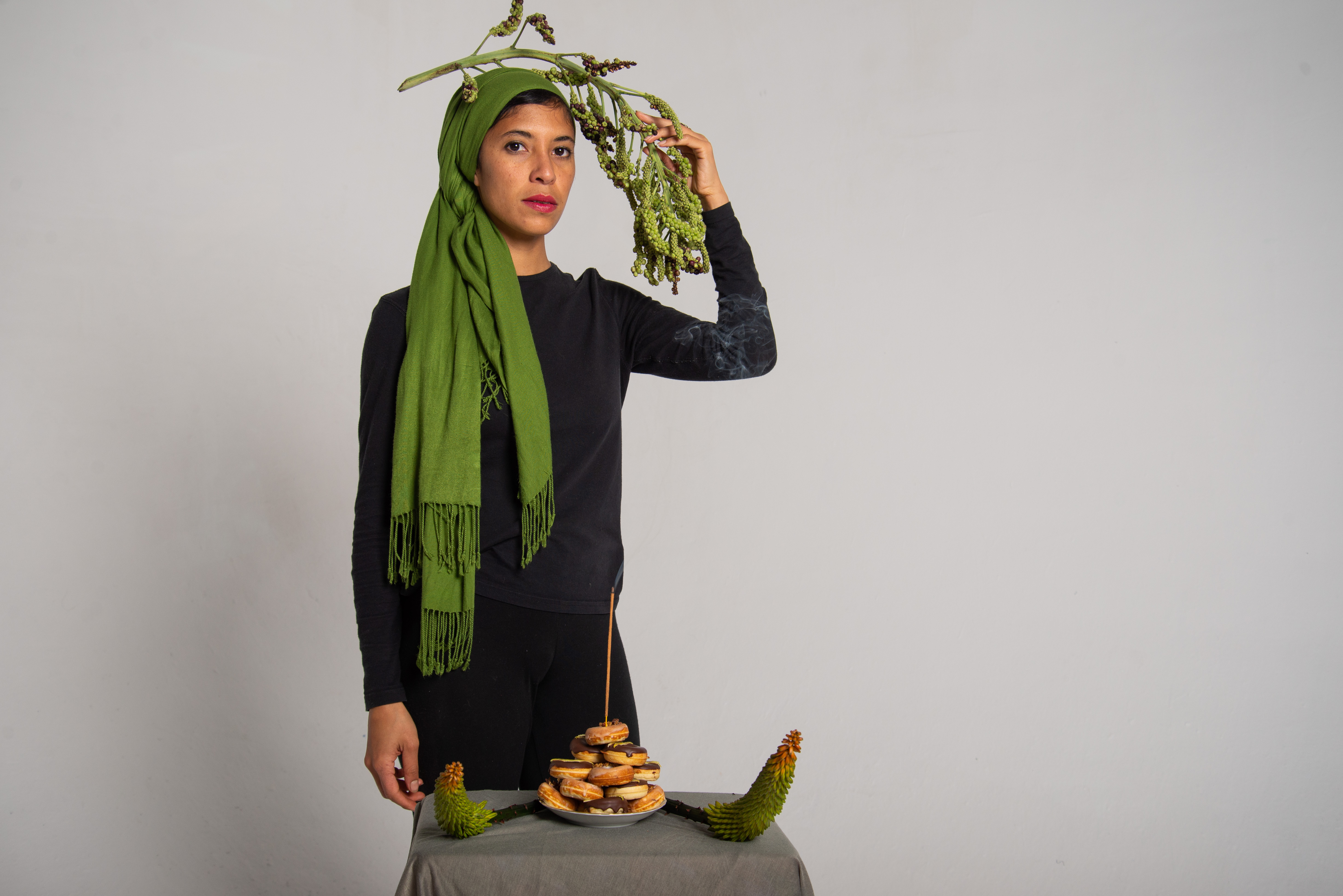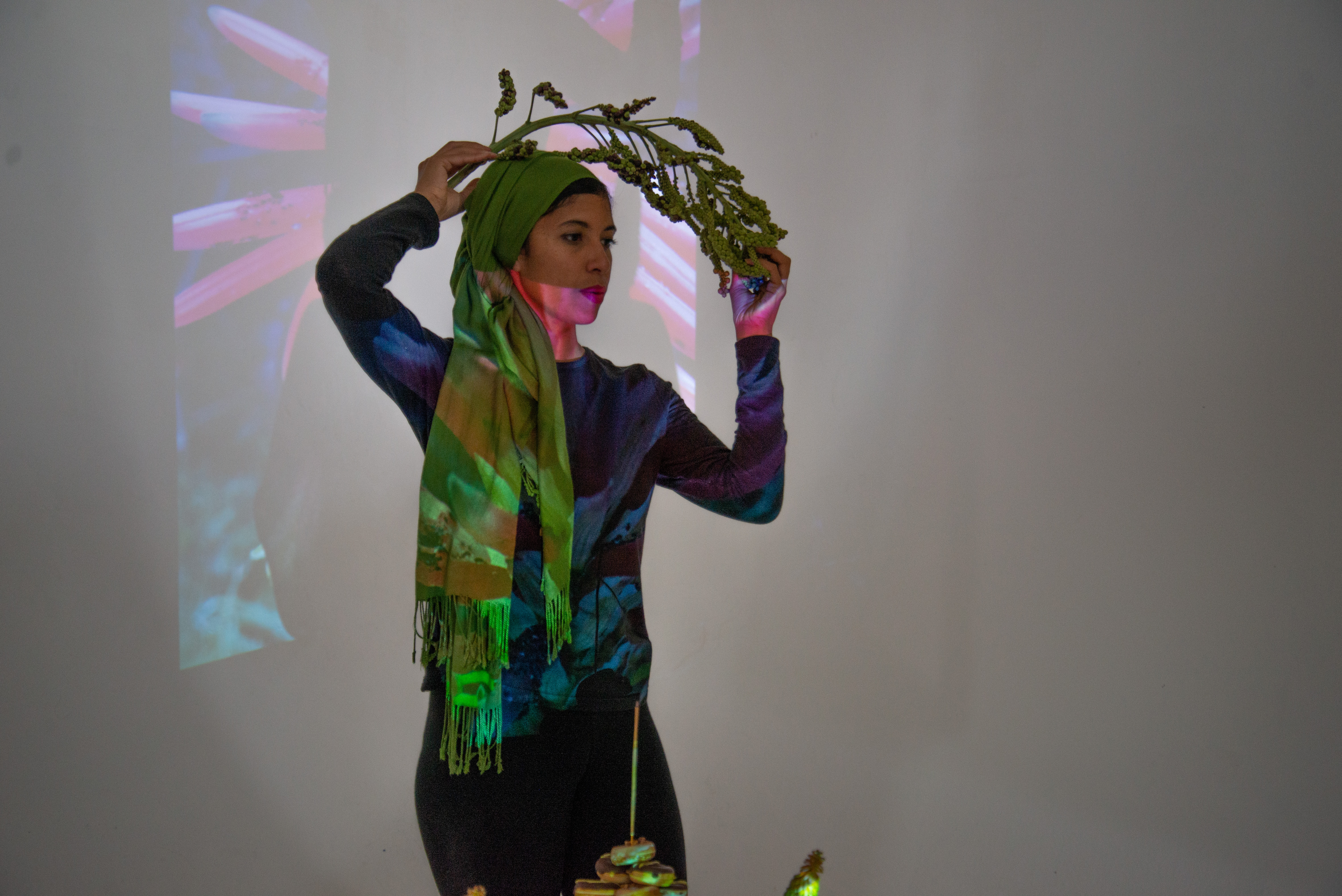“I don’t get involved in politics” is a feathery statement and an illusion —the very act of breathing is political; the politics of being, as expressed through money politics, identity politics, work politics and food politics.
Food activist and seed librarian Zayaan Khan is engaging these politics. Her spear is two pronged; challenging repressive food systems while also finding joy and inspiration through the trauma of our history as a way to reconcile and heal.
Zayaan is based in Cape Town and works to understand food systems through research and practice, particularly around land and food justice.In thinking through women’s month and the continued contribution that many women make in various aspects of society, I had a short chat with Zayaan about her important work. We spoke about food security, food waste, what’s growing in her garden and what we can expect to find in her pantry.

Can you talk to us about food security? In a country like South Africa, what are the dynamics that will influence the future of food security?
The fact is that the food system has become privatized – an ANC legacy of 1994 really exacerbated by a global world order of extractivism. At the same time we have this constitution where the right of food is entrenched. Food security is really a base line where people should have access to nutritious food but the reality is that this is becoming more difficult for most people. Food should not cost the exorbitant amounts that it does; farmers, even large scale wealthy farmers, get a fraction of what distribution and retailers slap onto food prices.
There is this romantic notion that we should all grow our own food but this is not realistic as it involves intensive work (and there are millions of farmers within your city and village as well as fishermen at the coasts and rivers that are doing the work and need our support). The rhetoric of needing more land for food production is not exactly true. The land is still in the heritage of a colonial reality and this must change but we have to be mindful of advocating for agrarian transformation.
What are some easy strategies young people in urban environments can engage in, in order to have a better relationship with food?
Always be critical. It’s exhausting speaking to older people, even in my age group of mid 30’s who boldly state that they “don’t get involved in politics” or they “stay away from politics”, it gives great insight into how far they are willing to go in thinking through transformation -basically not beyond their comfort zone. As black people, we are always political because that is our reality.
Ultimately we have all inherited a severely broken neoliberal capitalist system that is designed to be extractive, violent and only work for a few. Our relationship to food has become about money -you need to make bank before you can feed yourself and your family. Our inheritance is threaded with trauma and it just keeps getting worse. Criticism is important but so is finding solutions within that – finding the joys and inspirations through the trauma is the only way to reconcile and heal. Build this within your community. Go for classes and attend workshops, go to the library and check out all the books about land and plants. Google your heart out. Start with a recipe and perfect it. Ask questions.
What does your work entail as a seed librarian?
Thinking about seed as a lens to the world. My mother was a school librarian so we literally grew up in the library. This is where my bibliophilia comes from – the smell, the look and the world of books.
@seedbiblioteek was born out of all the intersectional and interdisciplinary work I do around seeds, and I took on to become the head bibliotekaris. The library is a home to seeds and stories but also the journeys of how the seeds come to be in the library. The library also has actual books about seeds, encourages the work of art around seed (illustration, sound, dyeing) as well as the use of seed in making – jewelry, music, weapons, food, etc.
How can begin to think about how to drastically reduce food waste?
I always advocate for whole utilisation because a lot of our food habits are entrenched; we always discard onion skins or radish leaves, bones, roots… yet simple afval can be utilised to make stocks, broths, soups, fermented food and sauces. It’s really all about building the pantry towards food security, but in a way that is delicious and by choice. Making spices this way has taught me a lot about stretching that rand.
Can you talk to us about indigenous food reclamation?
It’s really a continuation of the second answer above. I started working with indigenous food a while back, diving in deep about a decade ago.
I soon realised that the methods were quickly becoming exclusive (at least in the Cape that is “affectionately” known as the southernmost city in Europe).
Indigenous food knowledge exists only in cracks and some spaces of heritage here and there. We have experienced a genocide of indigenous peoples which is largely ignored, definitely not spoken about in schools. I used to call it indigenous food revival but later it became indigenous food reclamation. Reviving knowledge and reclaiming that space. This area of the world is the origin of our species, here in the southern Cape especially. The glory that is this land and sea and ultra biodiversity that exists here supported us to evolve in the way that we did.
People have existed here for over a hundred thousand years and at the entry of colonial strategy, the Khoi people were killed by smallpox and as sport. This trauma remains embedded in the land and indigenous food. I’ve been quieter about indigenous food publicly compared to the work I am doing privately. In a sense I am figuring out how to ‘deserve’ to do the work. I’m thinking through how to use fermentation as an invisible strategy towards that – working with invisible microbial colleagues of this land to ferment food and plant for dye and fertility for soil health.
Can you talk to us about how you engage food as art?
Initially it was a methodology towards healing, a way to speak about the depth of need, of trauma, violence and the grief that this land holds (without making people uncomfortable like when you start speaking about spirits, ancestors, faith and all the good things). Art became a process of healing and processing trauma. This then became a viable income stream, not just by producing but by teaching too.
We engage with this in various forms; storytelling for children, Food & Art workshops for farmers, etc.
What is currently growing in your garden?
So many things, from a dozen or so gifbol seedlings (Boophone disticha – a medicinal plant used as arrow poison), indigenous herbs and vegetables; from our own Jasmine to soutslaai, wild peach trees, all kinds of citrus, succulents, bulbs, aloes upon aloes.
We are working on a plant dye bed and a seed bed to finally produce our own seed for the @seedbiblioteek.
If we were offered a glimpse into your home pantry or fridge, what would we find?
A lot of salt from around the country and around the world. Salts I make using fermentation and solar cooking. A lot of experiments that went well like tomato mebos and many spices between my Cape Malay heritage and my husband’s Indian heritage. Soooo many fermented foods and dried goods. A shelf of soda fizzing up. Then of course ingredients to make smoking blends, and the pantry for medicine and craft- ashes, dried herbs, dried exoskeletons. Stuff like that.





















































